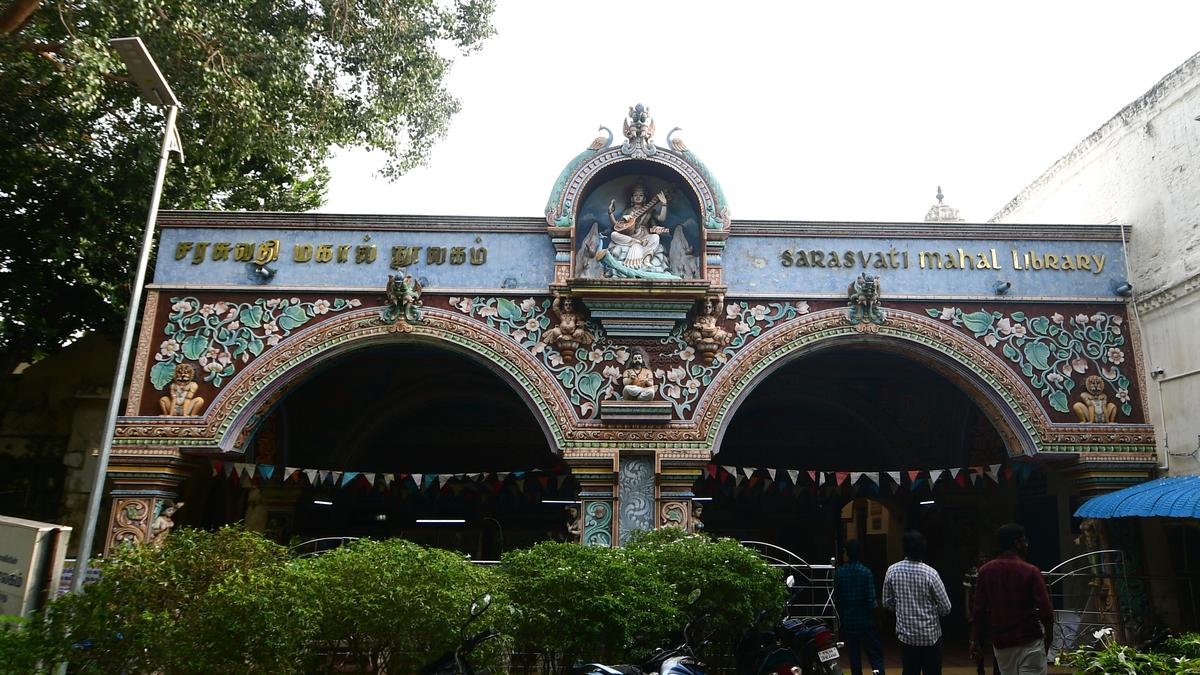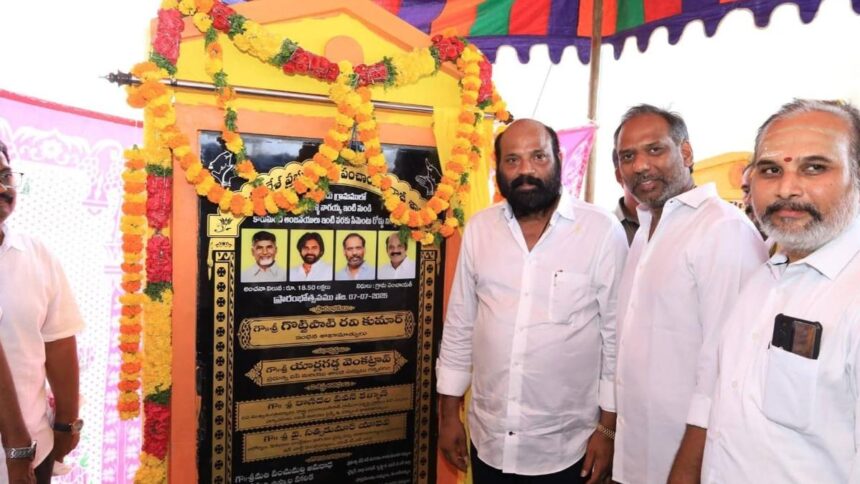
A view of the Sarasvati Mahal Library and Research Centre in Thanjavur
| Photo Credit: M. Srinath
The Tamil Nadu government has declared the Thanjavur Maharaja Serfoji’s Sarasvati Mahal Library and Research Centre as a library of historical and cultural importance. It has also classified it as an aided library of the Tamil Nadu Public Libraries Rules, 1950.
The grants for the library would have to be used for research and publications, conservation of manuscripts, library/museum upkeep and maintenance, preservation of manuscripts, digitisation of manuscripts and administration, according to a notification by the School Education Department.
Also Read: Sarasvati Mahal Library in Thanjavur to undergo major restoration
Tucked away inside the historic Thanjavur Palace, the Sarasvati Mahal Library is a repository of palm leaf/ paper manuscripts and books in Tamil, Sanskrit, Marathi, Telugu, Hindi, English, French, German and Italian languages. It is regarded as one of the greatest Oriental manuscript libraries in the world and among the oldest libraries in Asia.
It is believed the collections of the palace library began in the 16th century under the Nayak rulers of Thanjavur (1535–1675 CE) and expanded by the Marathas.
Although successive Maratha kings had maintained the library, Raja Serfoji II (1798-1832), a bibliophile, was chiefly responsible for shaping it. He is credited with having acquired several books and manuscripts. Today, it is a veritable treasure trove, with a collection of over 81,400 books and 47,500 palm leaf and paper manuscripts. The Rajah’s impressive personal collection of 4,530 books also forms part of the library.
The scripts used in the palm leaves are Grantha, Devanagari, Nandinagari and a few in Telugu, Malayalam, Kannada and Odiya. The Tamil manuscripts include rare commentaries on the Sangam works, unpublished portions of classics, Saiva, Vaishnavaite and Jain works and medicinal works of exceptional value.
Published – August 07, 2025 01:30 pm IST






















